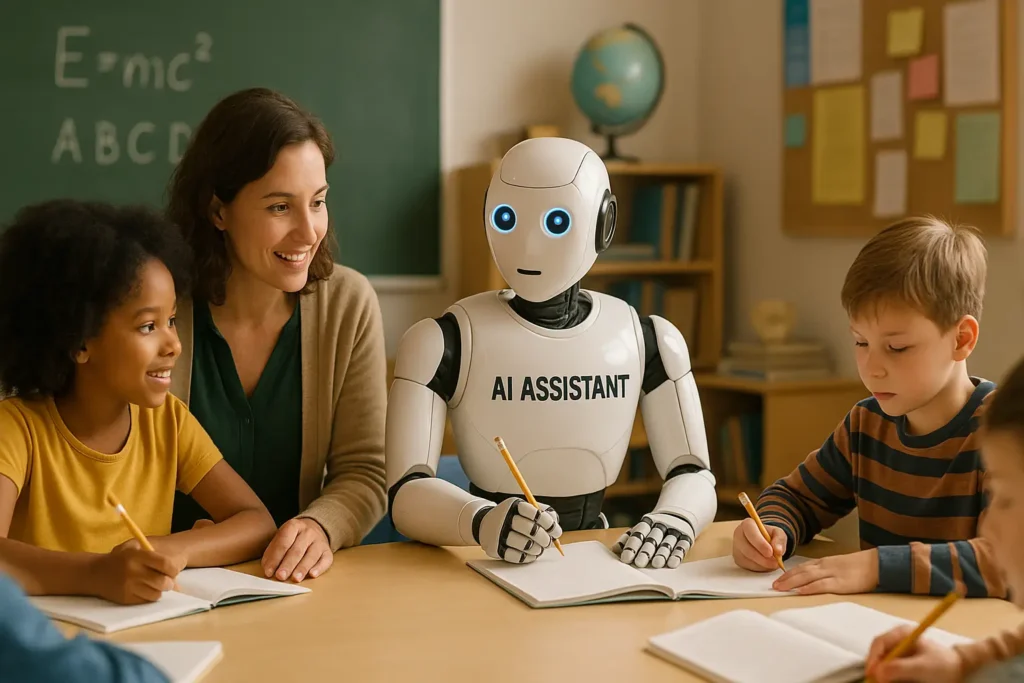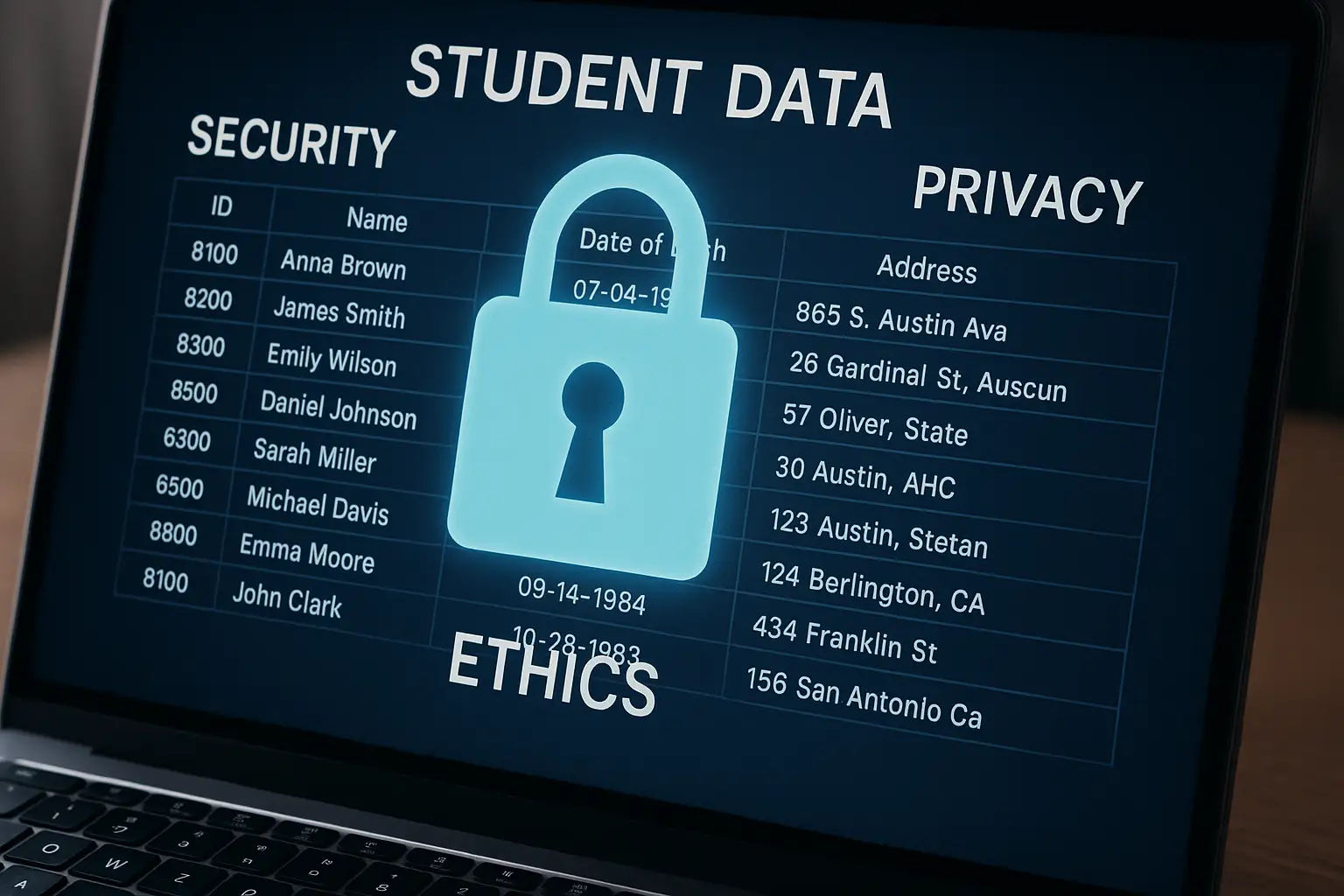Artificial Intelligence (AI) is changing the way we live, work, and learn. But right at the beginning of this journey, we need to talk about something very important: the ethics of AI in education. What’s right? What’s safe? What’s fair? These are questions we need to answer together.
Imagine using AI tools to help students learn faster or to support teachers with their daily tasks. Sounds amazing, right? But now imagine if these tools make decisions that aren’t fair to all students—or worse, if they collect private information without permission. That’s why ethics in AI isn’t just a fancy term. It’s about protecting people—especially children—and making sure technology is used responsibly in our schools.
Let’s dive into this topic together, using real examples and simple words, so everyone can understand how AI is shaping the classroom—and how we can make sure it does so in the best way possible.
What Is AI and How Is It Used in Education?
Before we get into ethics, let’s first understand what AI is. AI, or Artificial Intelligence, is a kind of computer technology that learns from information and makes decisions. In schools, AI can help in many ways, such as:
- Grading student tests automatically.
- Offering personalized lessons based on what a student knows.
- Suggesting learning activities.
- Helping teachers plan lessons.
- Translating texts into other languages.
AI seems like a dream come true for busy teachers and curious students. But every time a system makes a decision, it has to be fair, respectful, and safe. That’s where ethics comes in.
Why Ethics Matter in Education
When we talk about “ethics,” we’re talking about what is right or wrong. In school, it means making sure AI supports equality, safety, and respect. Here are some big questions that come up:
- Is the AI treating all students fairly?
- Is student information kept private?
- Are teachers still making the final decisions?
Let’s look at each of these more closely.
Bias in AI: When Fair Isn’t So Fair
AI learns by looking at data. But what if the data has a problem? For example, if most of the data is about students from one group or region, the AI might not understand students from other backgrounds. That’s called bias.
Real Example
Imagine an AI reading essays. If it learned mostly from students who speak perfect English, it might give lower grades to students who are still learning the language—even if their ideas are great. That’s not fair, and it can hurt a student’s confidence.
To fix this, developers need to make sure their data is diverse. Schools also need to keep a close eye on the tools they use.
Privacy Concerns: Who Sees the Data?
When students use AI tools, they usually share information—like their age, grades, and interests. But who is keeping this data safe? Student data privacy is one of the biggest ethical issues today.
Some questions parents and teachers should ask are:
- Is the information stored safely?
- Is it shared with other companies?
- Can students or parents delete the data?
Many countries have laws to protect students, such as the LGPD in Brazil and FERPA in the U.S., but schools need to make sure the tools they use follow these rules.
Transparency: Can We Understand the AI’s Decisions?
Sometimes, AI tools make decisions, but don’t explain why. This is called a black box. For example, an app may recommend a student skip a lesson—but not explain the reason.
This lack of clarity can make it hard for teachers and students to trust the tool. Ethical AI needs to be transparent, which means showing how and why it makes each choice.
The Role of the Teacher in an AI World
Even with the smartest AI, the teacher’s role is still essential. AI can support, but it can’t replace the human touch. Teachers understand emotions, know when a student is struggling, and bring creativity into learning.
Ethics in AI means making sure:
- Teachers stay in control of decisions.
- AI helps, but never takes over.
- Students learn to use AI as a tool, not as a boss.
👉 Discover how AI is transforming education systems worldwide with real, proven examples from the U.S., Brazil, China, and more.
How to Use AI Ethically in the Classroom

If you’re a teacher or school leader, here are some practical tips to ensure ethical use of AI:
- Choose tools from trusted companies.
- Read the terms of use carefully.
- Teach students about digital safety.
- Ask for parental consent when needed.
- Include discussions about ethics in your lessons.
What Are Governments and Schools Doing About This?
Many education systems are already creating rules and guidelines for the ethical use of AI. For example:
- The European Commission published ethical principles for AI in education.
- The UNESCO promotes digital inclusion and data privacy.
- In Brazil, the LGPD (Lei Geral de Proteção de Dados) protects personal data, especially for minors.
These steps are important, but schools also need to train teachers and educate students about how to use AI wisely.
In the United States, while there isn’t a single federal law dedicated exclusively to AI in education, several key regulations play a significant role in safeguarding students’ rights. The Family Educational Rights and Privacy Act (FERPA) ensures that schools protect students’ personal and academic data. This is crucial as many AI tools used in educational settings collect and analyze such information. More details about FERPA can be found here.
Additionally, the Blueprint for an AI Bill of Rights, introduced by the White House Office of Science and Technology Policy in 2022, outlines five principles aimed at guiding the design and deployment of AI systems to protect the American public. These principles emphasize safe and effective systems, protection from algorithmic discrimination, data privacy, notice and explanation, and human alternatives. Although not legally binding, this blueprint serves as a guiding framework for ethical AI use in various sectors, including education. You can read the full document here.
What Happens If We Ignore Ethics?
Using AI without thinking about ethics can lead to serious problems:
- Students could be unfairly treated.
- Someone might leak or sell private data.
- Trust in education could go down.
On the other hand, ethical AI builds trust, improves learning, and creates a safer space for everyone.
Ethical AI: Everyone’s Responsibility
In the end, ethical AI is not just a job for tech companies or school leaders. It’s something we all need to think about. Teachers, students, parents—everyone should have a voice in how AI is used in education.
By talking about these issues, we can make sure AI supports human values instead of replacing them. After all, education is about people—and technology should only be there to help.
Key Points About The Ethics of AI in Education: A Complete Overview
- Ethics in AI ensures fairness, safety, and respect.
- Bias in AI tools can lead to unfair treatment.
- We must protect privacy when collecting student data.
- Teachers should remain in control of educational decisions.
- Transparent AI builds trust in the classroom.
- Governments and schools are creating laws and guidelines.
- Everyone—students, teachers, parents—has a role in ethical AI use.
Conclusion
AI is a powerful tool, but it’s still just that—a tool. In education, it shows its true value when we use it with care, respect, and responsibility. Ethics helps us use AI wisely, making sure it helps every student learn better without leaving anyone behind.
Let’s keep this conversation going. The more we learn and talk about the ethics of AI, the better choices we can make for our students, our schools, and our future.
What do you think about AI in education? Share your thoughts in the comments—we’d love to hear from you!

